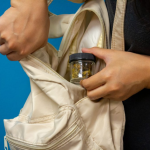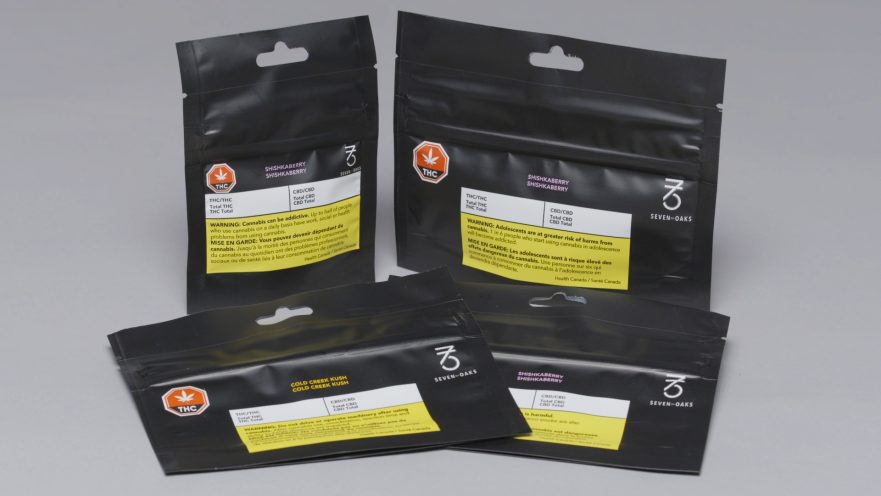Industries from cannabis to food delivery have begun implementing tamper-evident packaging to demonstrate to customers (and regulators) that products have not been manipulated. The key to tamper-evident packaging is that the material is plastic. That statement may not seem revolutionary, as most packaging is indeed plastic as noted by one of the seven recycling symbols, or by simple look and feel.
The problem is that your packaging should also have some elastic properties, i.e. the material does not deform; otherwise, the packaging is subject to “wear and tear” from shipping and handling. Thus, a contradiction exists – how will it ever be resolved?
Goal of Tamper-Evident Packaging
In the cannabis industry, tamper-evident packaging deters internal theft and diversion by minors. If packaging is violated, management can investigate when and why the incident occurred. Even small siphoning and losses of cannabis by weight adds up in large quantities over time. Similarly, tamper-evident packaging permits adults to know if minors in their residence are trying to misuse their cannabis products. For food delivery, tamper-evident seals prevent drivers from stealing fries or other customer-destined items.
What about tamper-proof or tamper-resistant or anti-tamper? All these terms have the same root word “tamper”, but different approaches to displaying the tampering act.
- Anti-tamper or tamper-proof products are not typically packaging materials, e.g. irreversible screws. Removal is often destructive or obvious.
- Tamper-resistant packages are defined by FDA guidelines fairly clearly. Here, the package would incur fracture, disallowing manipulation of evidence.
- Tamper-evident packages have less strict standards than tamper-resistance, and can still provide certain properties reliably, e.g. air-seals. Instead of fracture, the plastic material deforms.
Plastic Deformation and Fracture
The entanglement of long molecules called polymers dictate the behavior of plastic and elastic materials. Usually polymers are easy enough to stretch or twist – but what happens next depends on its chemical makeup and processing history (a topic for another day).
A rubber band would be an unhelpful material because you could never know how many times, if at all, it was manipulated once it recoils to its original form. Meanwhile, a laminated plastic film would work because, unless it’s tight around the package, you would notice its damage.

Tamper-Evident Seals
Tamper-evident packaging relying on seals operate under slightly different principles. With a strong adhesive on a rippable substrate, example here, these tamper-evident solutions will immediately collect dust and particles wherever the adhesive does not bond to a surface; thus, once exposed to air and detached, the adhesive will not bond as strongly to anything ever again.

How Can Sapphire Risk Help?
Every retail business must protect the customer experience. Tony Gallo and the team at Sapphire Risk Advisory Group have over 30 years of security experience and expertise. Sapphire has worked in 34 states and has aided in submitting over 420 cannabis business applications. Follow us on social media to stay up to date with cannabis industry updates!
Author

Leo Falgout is the Chief of Staff at Sapphire Risk Advisory Group. Leo Falgout has been with Sapphire for four years and previously served as Lead Technical Writer. As Chief of Staff, Leo has overseen the completion of over 500 security plans for cannabis business applications with an average score of 94%. Leo obtained his B.S. in Polymer and Fiber Engineering from the Georgia Institute of Technology and his M.S. in Materials Science and Engineering from the University of Illinois at Urbana-Champaign.
- First Experiences: What Our Interns Learned From Entering The Cannabis Industry

- California Senate Bill 69 Adds CEQA Requirements for New Cultivators

- Top 5 Cannabis Security and Surveillance Violations

- Peace of Mind in the Retail Sector: Facility Security

- Opportunities in the Ohio (O-High-O) Cannabis Market

- Building Security and Trust: Verifying Identification and Payments

- The Importance of Loss Prevention

- Thoughts to Improve Cannabis Security Regulations Across the Nation

- Opportunities in the Minnesota Cannabis Market

- U.S. Cannabis Legalization 2023 Update


